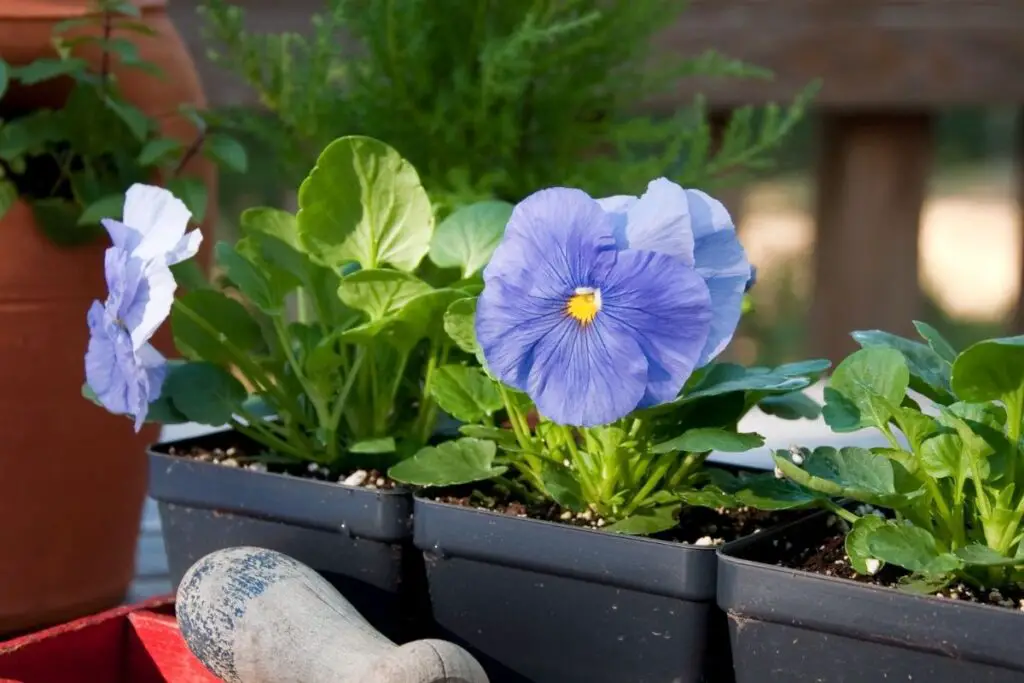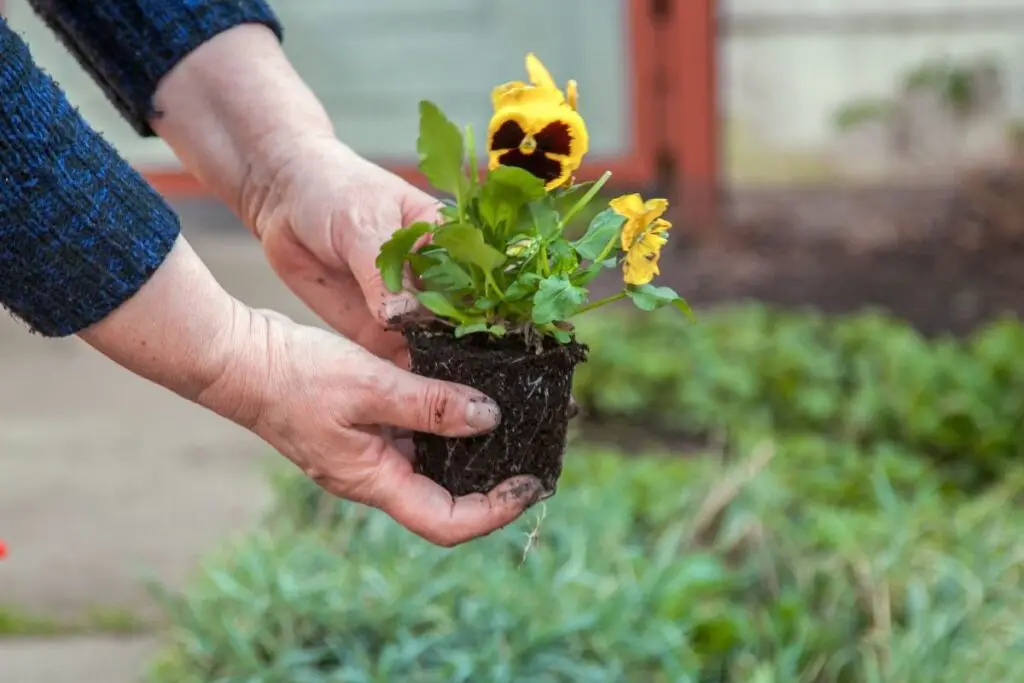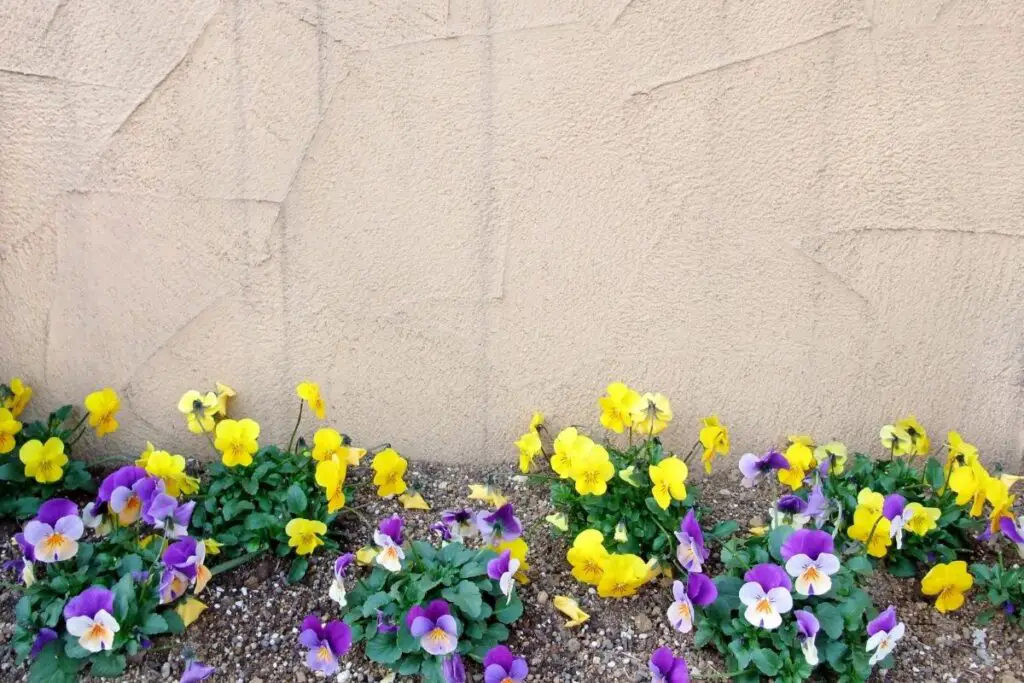Light is a significant factor required for the growth of all indoor and outdoor plants. Different plants have different light requirements. For the pansy plant, it can be a bit confusing to understand its light requirements. If you are growing a pansy plant, you must find out the ideal lighting condition of the plant.
Too much sunlight can cause sunburn and wilt your pansies. Whereas too little light can make the pansies grow excessively tall in search of light. So, how much light do pansies need?
As a general rule, pansies need about 6-8 hours of sunlight daily. If you reside in USDA zone 7-13, then you need to protect your pansies during the hottest part of the day. Using some partial shade can help as too much sun can lead to sunburn and slow down the overall growth of the flowers.
Pansies grow best on cool nights and the warm days of the spring. They enjoy full or partial sunlight. But, they thrive in cooler temperatures. Too high temperatures can kill the plant. So it is crucial to keep the plant cool.
Sometimes, it is confusing to understand the correct light requirements of pansies. In this article, we will discuss the light requirements of pansies in detail.

Importance of good lighting for pansies
One essential requirement for good growth in plants is light. An adequate amount of light is necessary for every plant as it is essential for photosynthesis and all the other processes that allow the plant to thrive.
Pansies survive well in cool temperatures; however, they need adequate sunlight for best growth. Excess sunlight is not suitable for them.
Although pansies enjoy full sun, they grow well in partial sunlight. Pansies should receive four to six hours of sun daily. That will help them grow well and photosynthesize properly. But, receiving excess light can affect the growth of the flowers.
Growing them in the partial sun is best for them if the zones are warmer than zone 7. This will help them to avoid direct sunlight, preventing sunburns.
So, make sure that your pansies receive the necessary amount of lighting for good growth.
What lighting is favorable for pansies?
Pansies grow best when they receive six hours of sunlight daily. But in warm areas, you must protect your pansies from too much heat and sunlight. Too much warmth and heat will restrict the consistent growth of the pansies.
Pansies can also grow well in partial sunlight. It will not be a problem if they are planted in a position where they receive partial sun.
Receiving partial sunlight or growing in the shade will help the pansies save themselves from the hot scorching heat of the sun during summers and springs, especially during the afternoons.
But make sure they don’t receive extremely low light, as that will make your pansies grow leggy. They will not grow blooming flowers either.
Other varieties of pansies, like the incredible wave pansy, need six hours of full sun daily.
During winters, you can place your pansies under a tree shading leaves, where the sunlight can reach the soil of your pansy but still, there is some shade over the foliage.
Exposure to the sun
The heat of the sun differs according to the seasons. In summers, pansies receive the scorching light of the sun. Pansies require both bright sunlight and a cool atmosphere. Springtime and fall months are the best for them.
Now, talking about the place of growing pansies, you must grow pansies at a place where they can get full or partial sunlight.
You should plant them in such a place, where they get exposed to the sun for four to six hours, but the surrounding temperature must be cool. Protect them from the scorching heat of the sun.
If you think that the heat of the sun is too much for your pansies, you can use a plastic bag to filter the direct sunlight. Or you can plant your pansy plant beside a big tree. That will work as a barrier against direct sunlight.
You must be careful during the summer months when the intensity of sunlight remains highest.
Looking for gardening supplies? We have tested 100's of products before recommending them to you guys. Check out our best pick below:
| Image | Gardening Supplies | Best Price? |
|---|---|---|
 Top
Top Top
Top | Raised Garden Bed Kit | Check On Amazon |
 | XLUX Soil Moisture Meter, Plant Water Monitor, Soil Hygrometer Sensor for Gardening, Farming, Indoor and Outdoor Plants, No Batteries Required | No Results |
 Top
Top Top
Top | 82 Pcs Garden Tools Set and Extra Succulent Tools Set | Check On Amazon |
 | Joeys Garden Expandable Garden Hose with 8 Function Hose Nozzle, Lightweight Anti-Kink Flexible Garden Hoses, Extra Strength Fabric with Double Latex Core, (50 FT, Black) | No Results |
 Top
Top Top
Top | Dual Chamber Compost Tumbler | Check On Amazon |
 Top
Top Top
Top | Sunnyglade Plant Stakes | Check On Amazon |
 Top
Top Top
Top | Organic Cold Pressed Neem Seed Oil | Check On Amazon |
 Top
Top Top
Top | Mighty Mint Gallon :-Insect and Pest Control Peppermint Oil | Check On Amazon |
 Top
Top Top
Top | Scotts DiseaseEx Lawn Fungicide | Check On Amazon |
 Top
Top Top
Top | Jacks Classic 20-20-20 All Purpose Fertilizer | Check On Amazon |
 Top
Top Top
Top | 30,000 Seeds Pollinator Attracting Wildflower Mixture | Check On Amazon |
 Top
Top Top
Top | Survival Vegetable Seeds Garden Kit-Over 16,000 Seeds | Check On Amazon |
Understanding the direction of the sun
We need to understand the direction of the sun and then plant the pansies accordingly. To get an ideal place to grow pansies outdoors, you first need to inspect the sun’s direction. You can use a compass to detect it.
You must consider factors like the duration of sunlight, the direction that receives the ideal sunlight for the pansies. Then find a spot for the pansies, depending on that.
If you plant your pansy plant in the east, it will get direct sunlight, but unfortunately, it will not last long. Planting your pansy in the west will expose the plant to the sun’s harsh rays, and the scorching heat will cause sunburn on the plant.
If your pansy plant is facing the south, it will get bright sunlight throughout the day. But planting your pansy in the north will expose it to soft sunlight.
You must plant your pansies according to the exposure to the sun based on directions.
If you fail to understand the sun’s exposure according to directions, you can plant the pansies wherever you want.
For example, suppose you don’t know the sun’s exposure according to the directions, and you plant your pansy in the west. In that case, that can harm your plant because the western side receives scorching heat from the sun in the afternoons, especially during summers and springs.
In this case, you can do one thing. Use some partial shade cloth to cover your plant. That will work as a barrier to direct sunlight.
To avoid such problems, you can plant your pansy under any big tree, where the bright light of the sun can penetrate through the tree and then touch your pansy. This will also help the pansy avoid any direct heat from the sun.
So, plant your pansy accordingly. Choose a partially sunny but cool place to grow them.
Should I move my pansy frequently?

You must maintain consistency with pansy plants. If you notice that your pansy is not getting adequate light, you need to transplant them to a place that meets all their light requirements.
Moving your pansy frequently can cause stress to your plant, due to which it might not function properly.
Instead of moving your plant, try protecting your plant from all kinds of problems.
If your pansy is receiving excess light, make barriers by keeping big pots beside it or covering it with plastic, or making a shade for it.
If your plant is receiving low light, remove the obstacles that are restricting the light.
If you are determined to move your plant, be consistent with it. Give your pansy time to adjust to the change and adapt to the new surroundings.
If you keep moving your plant frequently, the plant may fail to get adjusted to sudden changes.
Can pansies grow in low light?
Pansies need six hours of bright sunlight daily. Pansies can grow even in partial sunlight if the zones are warmer than zone 7.
But, if the amount of light is below the belt, it can be a problem for your pansy plant.
If your pansy does not get adequate light, they will grow taller, trying to reach the sunlight. This condition is called legginess.
Also, they will not grow any beautiful flowers if they do not get the necessary light.
Pansies are not getting enough light
If the pansies do not get any light from the sun, they will face problems like leggy growth or no blooming flowers. During winter, lack of light can limit the growth and development of your pansies.
To avoid such problems in your pansy plant, make sure to plant your pansies in such a spot where they can get an adequate amount of light throughout the year.
How to know if pansies are not getting enough light?
Pansies need six hours of sunlight daily. Partial sunlight will also work. But what happens if they are not getting enough light? Let’s read.
- The first problem is growing taller than average. When your pansy is not getting enough light, it will grow taller than its average size. They grow taller because they are constantly trying to reach the light of the sun. Tall growth leads to the breaking of the plant from between, thus harming the plant. You might notice fewer leaves as the plant will not have enough energy to grow as many leaves due to lack of sunlight.
- The second problem is no flower growth. When your pansy doesn’t get enough light, it will not grow any flowers. They need a minimum of 6 hours of sunlight every day. Only then will they grow healthy, and they will also be blooming beautiful and colorful flowers.
- We have discussed before that, along with bright sunlight, pansies also need cool temperatures. When a pansy plant is exposed to excess sunlight, the pansy plant can look droopy. This problem is caused mainly during the hot summers.
If you notice any issues mentioned above, you must take steps to save and protect your pansies from getting compromised.
What to do if pansies are not getting enough light?

Pansies need bright sunlight for healthy growth. But, if there is not enough sunlight outside, the pansies will not get an adequate amount of light. In such cases, you can take some measures to fulfill the lighting requirements of the pansies.
LED lights
You can use artificial lights to give the pansies an adequate amount of light. LED light provides supplemental lighting for pansies, producing the same light intensity but will less energy.
You can provide the energy of LED lights with solar system panels (you can use DIY solar panels or solar lights). I really love this light, that I got from amazon.
Adaptable plants
Pansies are adaptable plants. They can bloom throughout the year. All they need is a good amount of light, moisture, cool temperature, and fertilizers for healthy growth.
If your pansies are not getting enough light, transplant them to a spot with better lighting conditions. However, don’t move them around too frequently as that can harm the roots.
Instead of moving your plant from its place, you can remove the obstacles stopping the plant from getting light.
If your plant is drying, water them frequently. Try to keep your pansy plant moist and cool.
Give the pansy plant some time to get adjusted to its surrounding environment. Try providing it with a balanced and stable environment.
Watering
Watering always depends on the amount of light the plant is receiving.
If your pansy plant is not receiving enough light, you must adjust the watering accordingly, or else it can get overwatered.
If your pansy is getting low light, then you should water your pansy less. When your plant is receiving low light, then the moisture is not getting absorbed.
At this point, you should water your plant less; else, your pansy can suffer from root rot and edema disease.
Fertilizing
For good growth of pansies, you can use slow-release fertilizers.
But, during low light conditions, pansies need nitrogen. You can use fertilizers containing nitrogen during low light conditions. In warm areas, you must avoid using nitrogen.
Can pansies get sunburned?
Yes, of course, pansies can get sunburned.
You must not expose the pansies to excess direct sunlight. Too much exposure of the pansies to the direct sun will cause sunburn.
Excess exposure to the sun means the plant is getting extreme heat from the sun. Pansies cannot tolerate as much heat.
Pansies require cooler temperatures, and excess sunlight will not allow that as it will increase the temperatures.
When you see that your pansy is turning pale, it means they are suffering from sunburn.
To protect them from sunburn, water your plant correctly. Don’t let your plant and its soil remain dry.
Keep some bigger and taller potted plants beside your pansy to protect it from getting too much sunlight.
If your pansy is getting too much sunlight, then you must water your plant frequently. Too much light can dry up your pansy plant, so it will require more water to stay healthy.
Final thoughts
Pansies are colorful flowering plants. They will enjoy bright sunlight for six long hours. But at the same time, they require cooler temperatures. You should keep your plant under sunlight for six hours and also water them frequently to avoid dryness.
Plant your pansies in such a place where they will get adequate sunlight. If the sun is giving out scorching heat, protect your plant from it. If your plant is getting low light, take steps so that your plant receives sufficient light.
Happy gardening with pansies!
Ref: The University of Arkansas, Britannica, Utah State University, Wikipedia, The University of Georgia, The Pennsylvania State University, The Royal Horticultural Society.
